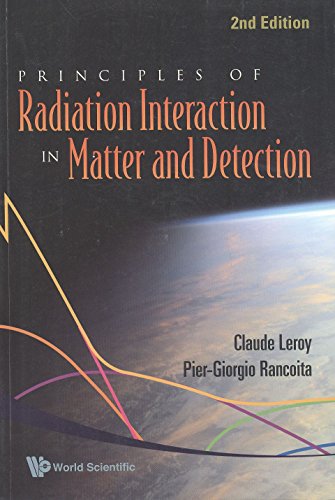Principles Of Radiation Interaction In Matter And Detection ebook download
Par gray ryan le samedi, mars 19 2016, 21:53 - Lien permanent
Principles Of Radiation Interaction In Matter And Detection by Leroy C., Rancoita P. G.


Principles Of Radiation Interaction In Matter And Detection Leroy C., Rancoita P. G. ebook
Publisher: WS
Format: pdf
Page: 951
ISBN: 9812818278, 9789812818270
Dark matter particles are also usually very scattered and do not interact with each other. So there is complementarity in the two ways of looking at the cosmos with high-energy gamma and neutrinos. It's responsible for a galactic glow, an abundance of anti-matter, and now — three quiet little taps in an underground mine. They are expected to be produced in the interaction of high-energy nucleons with matter or radiation. However, the tissue volume that can benefit from this feature may be very small in SRS and the corresponding clinical gain might be difficult to detect. The image shows emission from the center of the Milky Way, detected by PLANCK satellite. The Planck Satellite has observed a very unique emission of radio radiation from the center of the Milky Way, moving scientists closer than ever to a solution to the origin of dark matter. Much evidence has been accumulated to support the existence of dark matter, which, unlike normal matter, does not give off or absorb electromagnetic radiation. Protons have special characteristics that allow normal tissues to be .. Gamma rays are also produced in this scenarios. With construction costs on If they exist, these would occasionally collide with nuclei of ordinary matter, so they could in principle be directly detected in a large tank of an atomically dense material such as xenon, which produces light when a nucleus recoils. Ultraviolet (UV)-visible spectrometers are used to analyze the interactions between radiation and matter in the UV-visible region of the electromagnetic spectrum. More than 1000 metres underground, physicists have set traps of liquid xenon to catch their prey: hypothetical particles of dark matter that might very rarely interact with ordinary matter as they drift through Earth. Principles Of Radiation Interaction In Matter And Detection. The detection principle of neutrinos in Antares is based on a signature of the cherenkov light emitted by muons produced in CC interactions. The new research suggests this view may be oversimplified, arguing that a substantial minority of dark matter might in fact interact strongly, and could be detected in cosmic-ray observations. The principles of classical radiobiology are similar for protons and photons even though they differ in terms of physical properties and interaction with matter resulting in different dose distributions.
Chinua Achebe's Things Fall Apart (Bloom's Modern Critical Interpretations) pdf download